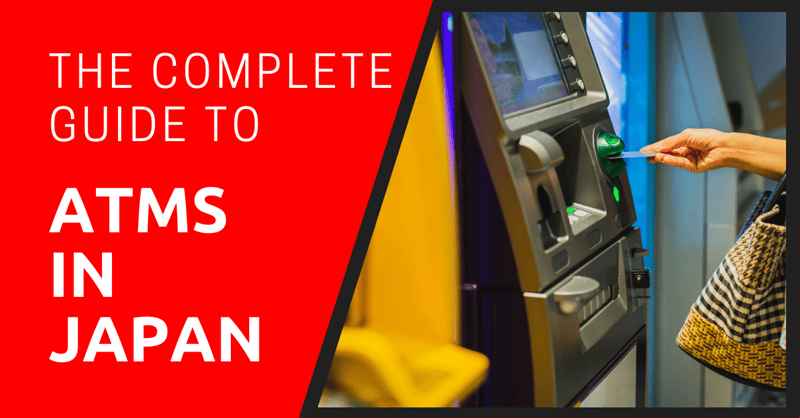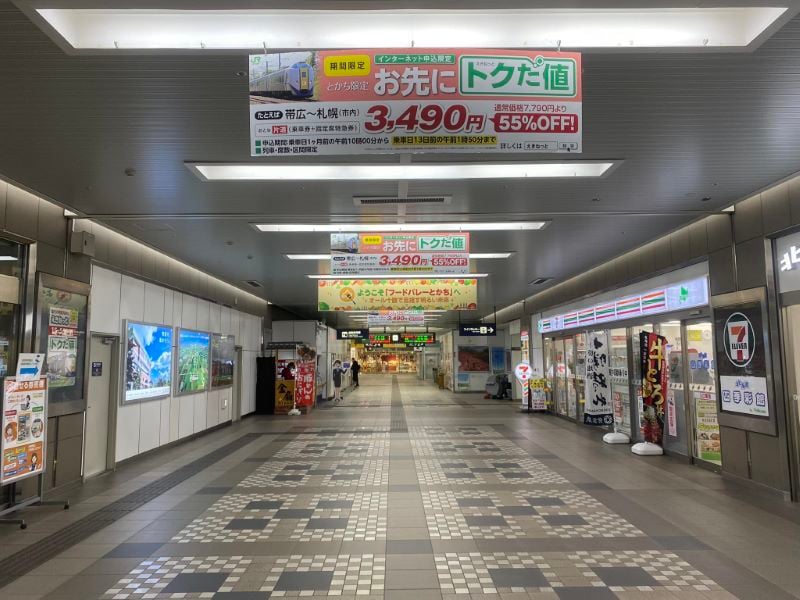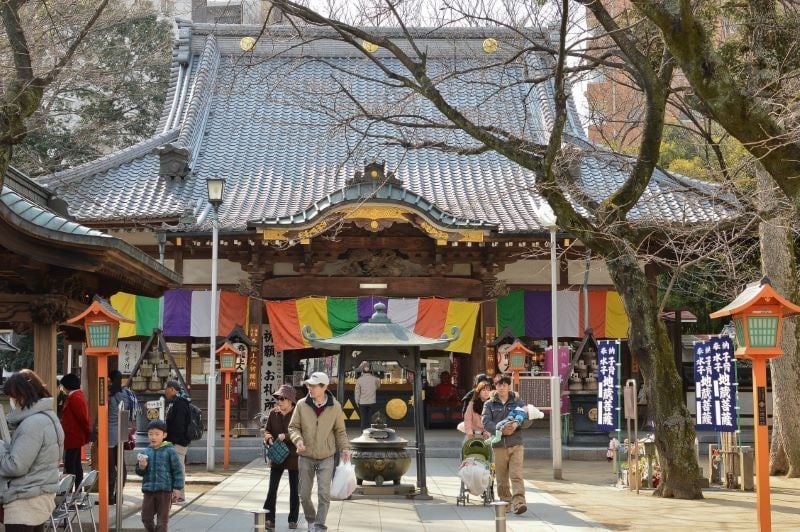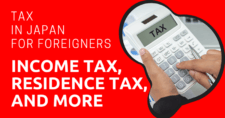
Using an ATM in Japan isn’t a particularly challenging task, but there are some differences compared to ATMs you might find in your home country.
At a local ATM here, you don’t only withdraw your money; you can also send money domestically to pay bills and easily deposit money into your account.
In this article, I am going to explain everything you need to know about using an ATM in Japan, including where to find one, which ATM to use, limits, fees, and much more.
This article will take approximately 12 minutes to read. Don't have the time right now? No worries. You can email the ad-free version of the article to yourself and read it later!
Disclaimer: This article may include links to products or services offered by ExpatDen’s partners, which give us commissions when you click on them. Although this may influence how they appear in the text, we only recommend solutions that we would use in your situation. Read more in our Advertising Disclosure.
Contents
- Where to Find ATMs in Japan
- Using Foreign ATM Cards in Japan
- Which ATM to Use
- How to Use an ATM in Japan
- Recommended ATM Card in Japan
- Fees for Japanese ATM Cards
- Withdrawal Limits
- Holidays Can Affect Your Access to Cash
- Furikomi: An Essential Japanese ATM Feature
- Lost or Stolen ATM Cards in Japan
- Using Your Tsuuchou Banking Book: An Alternative for Your ATM Card
- More Tips for ATM Users
- Now, on to You
Where to Find ATMs in Japan
ATMs in Japan are everywhere. You can find them at convenience stores, mainly at Seven Eleven and Family Mart, post offices, train stations, department stores, supermarkets, airports, or banks.
It can simply be said that you will find them everywhere you go.
Using Foreign ATM Cards in Japan
Most international ATMs accept all major international credit and debit cards.
Although I have heard of ATMs rejecting some Mastercards with IC chips at certain locations, I have never experienced any problems with my foreign cards at a Japanese ATM.
It depends on where you are located and what ATMs are available to you. For example, ATMs from certain banks may not accept an ATM card from overseas.
Which ATM to Use
Your safest bet is to look for a Seven Bank at a 7-11 convenience store near you; they have over 26,000 locations around Japan, and you won’t have a problem finding one. Seven Bank also doesn’t charge a withdrawal fee.
Without a doubt, your card will be accepted at a Seven Bank ATM.

Your second choice should always be the Japanese Post Office. Here is a Japanese Post Office ATM locator that will help you find the nearest one to you.
Major ATM Networks with English Language Options
Luckily, compared to ten years ago, many ATMs have been updated with language features and settings to accommodate as many different languages as possible.
Seven Bank offers one of the easiest experiences for non-Japanese speakers, but most other ATMs are equipped with similar language settings.
For example, ATMs at Family Mart or Lawson convenience stores, major chain supermarkets, international airports, and department stores are equipped with language options.
Banks also have an English option on their ATM, but I should warn you that this is not always the case.
How to Use an ATM in Japan
Using an ATM in Japan is pretty straightforward. It works like anywhere else in the world.
After you insert your card, enter your PIN, and select a language that you prefer, then choose to withdraw. That’s it.
However, ATMs in Japan are getting smarter every day. Now, at certain ATMs, you don’t need to select a language anymore.
After you insert your card, the ATM will automatically choose a language based on the country that issued the ATM card.
Recommended ATM Card in Japan
While we are talking about an ATM card, I should mention my personal favorite, the Wise card.
No matter what country you are coming from, the app allows you to create multiple different currency accounts; these accounts act like separate, unique bank accounts (the US accounts even have ACH and SWIFT routing numbers that allow you to transfer from your home country account directly into your Japanese bank account).
However, what I like the most is the Wise debit card. It allows you to easily withdraw money from any ATM, although it does impose a monthly withdrawal limit of 530,000 JPY.
You can also use this debit card with ease at any store that accepts credit/debit cards.
ATM Fees for International Cards
As you can imagine, ATMs here typically have extra fees for using a foreign card. There are three fees involved:
- Withdrawal fee
- Currency conversion fee
- Additional fees on weekends and holidays
Let’s take a look at each one in detail.
Withdrawal Fee
Seven Bank ATMs offer fee-free international withdrawals, while other bank ATMs charge an average of 200-500 JPY per transaction, with variations between banks.
My personal bank, the Japan Post Bank, charges a fee of 220 JPY (approximately 3.50 USD) for using my international card for withdrawals.
You will also have charges from your own home country bank (whatever that may be), and a small conversion fee for the exchange rate between the JPY and your home currency.
Currency Conversion Fee
Japanese banks typically charge 1%-3% for currency conversion.
Also, when withdrawing money using an international ATM card, you should know the difference between “dynamic currency conversion” and the local rate.
International ATMs here will offer both choices. You should be cautious of using dynamic currency conversion. Although it converts the transaction into your home currency, choosing this can lead to slightly higher exchange rates or extra fees.
Instead, you should decline it and choose local currency withdrawals. In both cases, JPY will be withdrawn from the ATM, but local rates are typically better.
When it comes to checking an exchange rate, I simply use Google Search by typing something like “1000 USD to Yen” to get accurate, up-to-date information on currency exchanges.
Additional Fees on Weekends and Holidays
There are higher fees on weekends and holidays, determined by your Japanese bank. The fees can increase up to 400-500 JPY during these time periods.
Fees for Japanese ATM Cards
When you use a Japanese ATM card at your corresponding bank (during business hours), withdrawing money is free of charge.
The only times you might be charged a withdrawal fee (110-220 JPY) is if you use your card at a different bank’s ATM machine, or if you try to withdraw money outside of bank business hours (e.g., before 9:00 a.m., after 5:30 p.m., national holidays, or weekends).
Withdrawal Limits
In general, the single transaction withdrawal limit is usually 50,000 JPY.
So, if you need more money, you may have to split it into two transactions and are forced to pay fees twice.
Holidays Can Affect Your Access to Cash
While I have had experiences where I needed money and had problems withdrawing it during a holiday in the past, gone are the days of the Japanese cash society.
Nowadays, cashless pay systems are almost everywhere (with the exception of small bars and other private clubs), so not having cash on hand is not particularly a big problem.

You only have two periods during the year to be concerned with where banks will be closed.
The first is the Obon holiday, which is in mid-August, and the other is the end of the year holiday from 12/31 to 1/4. For your reference, here is a list of the long weekends and holidays in Japan.
Furikomi: An Essential Japanese ATM Feature
“Furikomi” is the term used in Japan to refer to bank transfers or remittances.
Largely, furikomi is used for domestic payments such as: your monthly rent, internet bills, payments for services, or direct transfers to a family member or friend in Japan from an ATM.
It is also used for sending money out of Japan.
How to Use the Furikomi Service from an ATM (Locally)
You can use furikomi at a bank branch, post office, or convenience store, depending on the ATM. Once at the ATM, select the language for the transaction. After selecting the language, insert your bank card and enter your PIN to access the ATM services.
Look for the “Furikomi” or “Transfer” option on the ATM menu screen. Simply input the recipient’s bank account information (including the account number, recipient’s name, and the amount to be transferred).
Be prepared with all this information, and just in case, also have the following information:
- the recipient’s bank code
- branch name
- and branch code
Some ATMs require more information than others.
Don’t forget to collect the receipt that confirms you sent the money for your own personal records.
Some ATMs may have restrictions on the amount that can be transferred in a single transaction.
How to Use the Furikomi Service from an ATM (International Transfers)
As I will explain, furikomi transactions can also be used for international transfers. They are conducted through the SWIFT network (you will have to ask your bank teller if this is possible with their ATM).
However, the downside to using SWIFT from an ATM is the cost per transaction.
Japan Post Bank charges 7,500 JPY for an international transfer, and you’ll find many other SWIFT ATM transfers could be similarly expensive.
What has become most popular are middle-man services for getting your money from Japan to your home country, such as Wise.
These services will often have a company Japanese bank account that you must first send your money to, then this money will be transferred for a reasonable fee.
All of these transfers can be done by the furikomi system from your chosen ATM.
Lost or Stolen ATM Cards in Japan
In the unfortunate event that you lose your card in Japan, or even worse, it gets stolen, you will need to take the following steps to keep your money safe.
Contact Your Card Issuer
It goes without saying that you’ll want to report your card if it goes missing. Most major credit card companies have a 24-hour customer service line for reporting lost or stolen cards.
If it is a card from your local Japanese banks, you may have to wait until bank business hours to visit in person, or call their customer service. If possible, keep a record of emergency contact numbers for your card issuers from your country just in case something like this happens to you. It also isn’t a bad idea to carry a backup debit or credit card that is separate from your primary card.
This can serve as an alternative means of accessing funds in case your primary card is lost or stolen.
File a Police Report
If your card was stolen, or you see charges on it that you did not make, it is advisable to file a report with the local police. This official report might be necessary to recover the funds through your credit card agency.
Using Your Tsuuchou Banking Book: An Alternative for Your ATM Card
Unlike other countries that offer paperless records, or monthly balance notifications that are delivered to your house, Japan issues bank customers something known as a “tsuuchou”, a paper bank ledger in the form of a small book.
These small paper bankbooks serve as a record of your transactions. Many ATMs, especially at banks, have a small ink printer inside of them. When you insert your open paper bankbook inside the ATM, it will print the date, the transaction number, and your remaining balance on an empty line in your book.
You do not have to remember the pin number for your bank book; it will have the same PIN number you use for your ATM card.
In addition to keeping a physical record of your account, you can also use it to withdraw, deposit, and move money around Japan domestically (which we will talk about a bit later).
More Tips for ATM Users
Here are some more tips when you want to use an ATM in Japan.
Notify Your Bank and Card Providers
Many cards connected to your home country bank, or even credit cards, may be regionally locked as a security measure against fraud. Before traveling to Japan, you should inform your bank about your travel plans; you will want to tell them the dates of your visit.
This will prevent your card from being flagged for suspicious activity when you use it here.
Learn a Few Phrases in Case You Need Help at an ATM
Sometimes you will encounter an ATM that has a different interface than what you have seen before. If it is at a bank location, here are a few phrases you can use to get some help.
Now, on to You
I hope that this article gives you everything you need to know about using an ATM in Japan.
If you don’t have a Japanese ATM card, using an ATM from Seven Eleven is recommended since it doesn’t have any withdrawal fee. Also, it’s easy to find.







